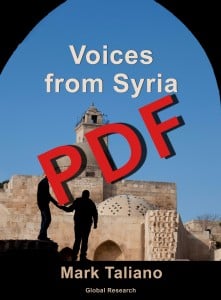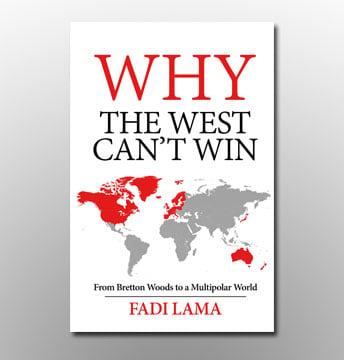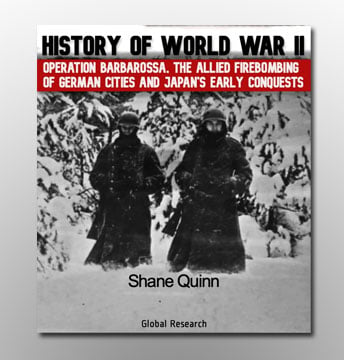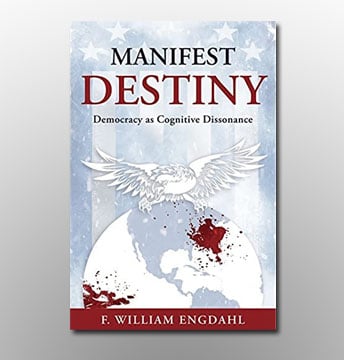All Global Research articles can be read in 51 languages by activating the “Translate Website” drop down menu on the top banner of our home page (Desktop version).
To receive Global Research’s Daily Newsletter (selected articles), click here.
Follow us on Instagram and Twitter and subscribe to our Telegram Channel. Feel free to repost and share widely Global Research articles.
***
In den siebziger und achtziger Jahren des vergangenen Jahrhunderts, in einer Zeit materiellen Wohlstands und vielfältiger Zukunftsperspektiven, hat der Autor die Werke des Literaturnobelpreisträgers Albert Camus zwar eifrig gelesen, jedoch ihre historische, philosophische und psychologische Tiefe nicht wirklich erfasst und empfunden.
Ein viertel Jahrhundert später, nach einem „gelebten Leben“ und inmitten finsterer Zeiten (Brecht), möchte er dazu anregen, Camus‘ Dramen, Romane und philosophische Essays wieder zu lesen: Zum einen bieten sie bei der individuellen Bewältigung der absurden Welt Orientierung und Unterstützung, zum anderen – und das ist ebenso wichtig wie das eigene „Überleben“ – bedeuten sie eine Schulung im Geiste der Revolte, jener Geisteshaltung, die die Gerechtigkeit bereits auf dieser Erde, und nicht erst im Himmel verwirklichen will. Es ist schmerzlich, zu erleben, dass sich die Mitmenschen nur sehr schwer dafür gewinnen lassen.
Trotz aller Absurdität des Weltenlaufs und der Dämonie der Menschheitsgeschichte werden Camus‘ düstere Schilderungen von einer großen Liebe zur Welt und zum Mitmenschen überstrahlt. So lautet seine letzte (schriftlich überlieferte) Nachricht: „Geben, wenn man kann. Und nicht hassen, wenn das möglich ist.“ (1)
Die Absurdität der Welt – und der Sinn des Lebens
Das Problem der menschlichen Existenz ist das Grundmotiv des existentialistischen Philosophierens. Die entscheidende Frage, die sich nach Camus jedem Menschen stellen muss, ist die Frage nach dem Sinn des Lebens. Zuerst müssen die Menschen jedoch wissen, ob sie dieses Dasein rückhaltlos bejahen können. Erst danach können sie sich dazu entschließen, wie sie ihr Leben gestalten wollen.
In der Regel wollen die meisten Menschen diesem wichtigen Problem ausweichen, doch Ausflüchte nützen nichts: man muss ja oder nein sagen. Würde es sich nicht mehr lohnen zu existieren, weil alles als absurd erkannt wurde, scheint es keine andere Lösung mehr zu geben als den Selbstmord. Dem Selbstmord geht eine Verzweiflung voraus: die Überzeugung, dass es keinen Ausweg mehr gibt, keine Zuversicht. Der Entschluss, der in der Stille einer verzweifelten Seele heranreift, ist der absurdeste aller Entschlüsse und daher auch derjenige, der am schwersten zu fassen ist.
Man sollte nicht glauben, dass das Problem des Selbstmordes nur in die „Pathologie“ gehört, in die Lehre von den abnormalen und krankhaften Vorgängen und Zuständen im Körper und deren Ursachen. Auch der „normale“ Mensch kennt – vor allem in finsteren Zeiten – Lebenssituationen, in denen im Menschenherzen der Wunsch aufsteigt, Mühseligkeit und Qual dieses Daseins von sich zu werfen. So nahmen im ersten Corona-Jahr 2020 auch die Selbstmorde unter Jugendlichen stark zu (2).
Nach Camus ist der Selbstmörder jedoch ein Philosoph, dessen Erkenntnishaltung in einem Fehlschlag endet. Der Selbstmörder hält die von ihm erfasste Absurdität der Welt nicht aus und entflieht ihr. Der Einsicht in die Absurdität der Welt vermögen eben nur wenige standzuhalten; die Flucht davon ist die Regel, sowohl im Alltagsleben wie auch in Philosophie, Religion und Wissenschaft. Der religiöse Mensch klammert die Absurdität der Welt durch die Hoffnung aus, dass eine göttliche Instanz einen höheren Sinn verbürge.
Der Mythos von Sisyphos – einem glücklichen Menschen
Der Selbstmord – faktisch oder im philosophischen Sinn – ist nicht die einzig mögliche Haltung des Menschen gegenüber dem Absurden. Wenn das Leben tatsächlich keinen Sinn mehr hat, so bedeutet das noch keine Nötigung, sich umzubringen. Auch die Flucht in irdische oder überirdische Hoffnungen kann vermieden werden. Die Erkenntnis des Absurden enthält in sich die Aufforderung, der Absurdität Herr zu werden.
In der Sage „Der Mythos von Sisyphos“ schildert Camus einen Menschen, der die Absurdität erkannt hat und sich lächelnd in einem illusionslosen Universum zu behaupten versucht. Wie alle Gespenster, so entweicht auch das Gespenst der Absurdität, wenn man nur den Mut aufbringt, es zu stellen. Dies ist nur möglich, wenn die Menschen nicht zu ihren Göttern flüchten, sondern sich daran gewöhnen, einen gleichgültigen Himmel über sich zu sehen, und eine Sonne, die sowohl auf seine Freuden als auch auf seine Leiden unbeteiligt herabscheint. Der Verzicht auf die Götter lehrt die Menschen, den lebenslänglichen Kampf gegen die Absurdität aufzunehmen. Und dies in der Absicht, dieser sinnlosen Welt doch noch ein Maß von Sinn aufzuzwingen.
Die Sage erzählt, dass die Götter Sisyphos verurteilt hätten, in der Unterwelt einen Stein auf einen Hügel zu wälzen, und dies bis in alle Ewigkeit, da der Stein jedes Mal, wenn der Gipfel erreicht wird, den Abhang hinunterrollt. Mit einem Wort: Sisyphos, der Held des Absurden, ist zu ewiger Qual verdammt. Seine Anstrengungen haben keinen Sinn, denn er weiß, dass der Stein immer aufs Neue rollen wird. Die unaufhörliche Mühsal führt zu keinem Erfolg, und die Flucht in die Hoffnung ist Sisyphos versagt. Dennoch wälzt er seinen Stein.
Man kann Sisyphos nur verstehen, wenn man ihn auf dem Weg nach unten zu seinem Stein betrachtet. Der Abstieg ist die Zeit des Bewusstseins. Sisyphos überblickt den nutzlosen Kraftaufwand, an dem er sich verschwendet hat, und er denkt an die vergebliche Bemühung, die wieder auf ihn wartet. Trotzdem ist er weit davon entfernt, den Kampf aufzugeben. Er erkennt, dass das Schicksal vom Menschen abhängt und dass das Leben nur Sinn hat, wenn man die Steine wälzt.
Die schmerzliche Qual, die so lange dauert, wie das Menschenleben selbst, bezieht Sisyphos in sein Dasein ein, ohne dass er gewillt ist, Trost zu suchen. Er bekennt sich zur Erde und verleugnet den Himmel. Er geht seinen Weg durch das Land der Hoffnungslosigkeit, ohne zu fragen, wie weit er sich seinem Ziel genähert habe.
Sisyphos gebührt Ruhm dafür, dass er bereit ist, seine Last bis zum Tode zu tragen. Er jammert auch nicht, weil er weiß, dass das Jammern die Steine nicht bewegt. In seinem frohgemuten Herzen, das sich keinem Gott unterwirft, wächst kein Groll gegen diese Welt, in der das Abenteuer eines Menschenlebens abläuft. Da es nur diese eine Welt gibt, wäre es widersinnig, sie nicht zu bejahen, selbst dann, wenn sie für den Menschen nur die zu wälzenden Steine bereithält. Die Auflehnung und der endlose Kampf von Sisyphos enthalten keine Bitterkeit. Camus sagt: „Man muss sich Sisyphos als einen glücklichen Menschen vorstellen.“
Sisyphos ist nicht nur ein Held der Sage – er ist eine Wirklichkeit des Alltags, sichtbar werdend in ebenso vielen Variationen wie die Absurdität der Welt. In seinem Roman „Die Pest“ hat Camus das Drama von Sisyphos auf die Gegenwart übertragen. Sowohl die Figuren als auch die Szenerie dieses Schauspiels weisen über sich selbst hinaus. Der eigentliche Schauplatz des Dramas ist nicht die Stadt Oran, sondern die Welt – und in verschiedenen Personen, die Camus in ihrem Leben, Lieben und Sterben schildert, erblickt man den lebenden, liebenden und sterbenden Menschen, der im Grunde den Zeitenlauf überdauert.
„Der erste Mensch“: Schreiben für die Mutter und das Mutterland Algerien
Der autobiographische Text „Le premier homme“, an dem Albert Camus nach Verleihung des Nobelpreises im Jahr 1957 bis zu seinem Unfall-Tod 1960 arbeitete, beginnt mit einer Widmung an seine Mutter, die Witwe Camus: „Dir, die Du dieses Buch nie wirst lesen können“. (3)
Im Roman „Der erste Mensch“ schildet Camus in der dritten Person und unter einem fiktiven Namen die Kindheit eines armen Algerienfranzosen in der kolonialen Stadt Algier und wie die analphabetische Großmutter und die analphabetische Mutter die Familie, deren Vater im Ersten Weltkrieg gefallen war, durchbrachten. Er schreibt von den Leiden und Freuden einer armen Kindheit unter der Sonne Algeriens und der prägenden Rolle, die der verantwortungsvolle Elementarschullehrer Louis Germain im Leben des begabten Kindes spielte.
Camus erzählt von der hart arbeitenden, schweigsamen, schwerhörigen und leicht sprachbehinderten Mutter, deren stiller und rätselhafter Existenz die ganze Liebe des Knaben galt. Als erwachsener und erfolgreicher Schriftsteller sprach und schrieb er für sie, um ihr Schweigen wettzumachen. In der Überlieferung heißt es:
„Was er am meisten auf der Welt ersehnte, dass seine Mutter das, was sein Leben und sein Ureigenstes war, lesen würde, genau das war unmöglich. Seine Liebe, seine einzige Liebe würde auf ewig stumm bleiben.“ (4)
Doch Camus schrieb nicht nur für seine Mutter, sondern auch für sein Mutterland Algerien. Die Verleihung des Nobelpreises und sein Tod fallen in die Jahre, in denen in der französischen Kolonie Algerien, dem Land, in dem Camus geboren wurde und aufgewachsen ist, ein Unabhängigkeitskrieg gegen Frankreich geführt wurde, den das offizielle Frankreich lange nicht als Kriegshandlung des kolonisierten Volkes anerkennen wollte.
Deshalb schrieb Camus in seiner ihm eigenen Sprache und Leidenschaft gegen das Unrecht:
„Gebt das Land zurück. Gebt alles Land den Armen, denen, die nichts haben und die so arm sind, dass sie sich nicht einmal gewünscht haben, etwas zu haben und zu besitzen, denen, die ihr gleichen (der Mutter), der zahllosen Schar der Armen, die meisten von ihnen Araber, manche auch Franzosen, denen, die hier mit Hartnäckigkeit und Ausdauer leben oder vielmehr überleben, mit der einzigen Ehre, die auf der Welt etwas wert ist, die Ehre der Armen.“ (5)
Brief an den Volksschullehrer Louis Germain nach Verleihung des Literaturnobelpreises
In der editorischen Notiz zu Beginn des Romans „Der erste Mensch“ schreibt die Herausgeberin, Camus‘ Tochter Catherine Camus:
„‘Der erste Mensch‘ ist das Werk, an dem Albert Camus bis zu seinem Tod arbeitete. Das Manuskript wurde bei dem tödlichen Autounfall am 4. Januar 1960 in seiner Mappe gefunden. Es besteht aus 144 mit der Hand in einer eiligen, schwer entzifferbaren Schrift heruntergeschriebenen Seiten, manche ohne Punkt und Komma, die nie überarbeitet wurden.
(…).
Nach der Lektüre von ‚Der erste Mensch‘ wird man verstehen, weshalb wir auch den Brief Albert Camus‘, den er nach der Verleihung des Literaturnobelpreises an seinen Volksschullehrer Louis Germain schickte, und dessen letzten Brief an ihn im Anhang abdrucken.“ (6)
Camus selbst charakterisiert seinen ersten Lehrer in seinem autobiographischen Roman folgendermaßen:
„In Monsieur Germains Klasse fühlten sie zum erstenmal, dass sie existieren und Gegenstand höchster Achtung waren: Man hielt sie für würdig, die Welt zu entdecken. Und ihr Lehrer ließ es sich sogar nicht nur angelegen sein, ihnen beizubringen, wofür er bezahlt wurde, er eröffnete ihnen sogar sein Privatleben, er lebte es mit ihnen, erzählte ihnen seine Kindheit und die Geschichte von Kindern, die er gekannt hat, legte ihnen seine Ansichten dar und nicht seine Ideen, denn er war zum Beispiel antiklerikal wie viele seiner Kollegen und sagte im Unterricht doch nie ein einziges Wort gegen die Religion oder gegen etwas, was eine Wahl oder Überzeugung betraf, aber er verurteile umso vehementer, was indiskutabel war, nämlich Diebstahl, Denunziation, Taktlosigkeit, Unanständigkeit. Vor allem aber erzählte er ihnen vom noch ganz nahen Krieg, den er vier Jahre mitgemacht hatte, von den Leiden der Soldaten, von ihrer Tapferkeit, ihrer Geduld und vom Glück des Waffenstillstands.“ (7)
Der Brief Camus‘ an diesen Lehrer und dessen Antwort wurden im Anhang des Romans abgeduckt (8):
„19. November 1957
Lieber Monsieur Germain,
Ich habe den Lärm sich etwas legen lassen, der in diesen Tagen um mich war, ehe ich mich ganz herzlich an Sie wende. Man hat mir eine viel zu große Ehre erwiesen, die ich weder erstrebt noch erbeten habe. Doch als ich die Nachricht erhielt, galt mein erster Gedanke, nach meiner Mutter, Ihnen. Ohne Sie, ohne Ihre liebevolle Hand, die Sie dem armen kleinen Kind, das ich war, gereicht haben, ohne Ihre Unterweisung und Ihr Beispiel wäre nichts von alledem geschehen. Ich mache um diese Art Ehrung nicht viel Aufhebens. Aber diese ist zumindest eine Gelegenheit, Ihnen zu sagen, was Sie für mich waren und noch immer sind, und um Ihnen zu versichern, dass Ihre Mühen, die Arbeit und die Großherzigkeit, die Sie eingesetzt haben, immer lebendig sind bei einem Ihrer kleinen Zöglinge, der trotz seines Alters nicht aufgehört hat, Ihr dankbarer Schüler zu sein. Ich umarme Sie von ganzem Herzen.
Albert Camus“
Volksschullehrer Louis Germain antwortete Camus am 30. April 1939:
„Mein lieber Kleiner,
(…). Ich finde keinen Ausdruck für die Freude, die Du mir mit Deiner reizenden Geste und der Art, Dich zu bedanken, gemacht hast. Wenn es möglich wäre, würde ich den großen Jungen, der Du geworden, und der für mich immer ‚mein kleiner Camus‘ bleiben wird, fest an mich drücken. (…). Der Pädagoge, der seinen Beruf gewissenhaft ausüben will, lässt keine Gelegenheit aus, seine Schüler, seine Kinder kennenzulernen, und sie bietet sich ständig. Eine Antwort, eine Geste, eine Haltung sind äußerst aufschlussreich. Ich glaube also den netten kleinen Kerl, der Du warst, gut zu kennen, und das Kind enthält im Keim oft den Mann, der es werden wird. Deine Freude an der Schule war überall spürbar. Dein Gesicht verriet Optimismus. (…).
Ich glaube, ich habe während all meiner Berufsjahre das Heiligste im Kinde respektiert: das Recht, seine Wahrheit zu suchen. Ich habe euch alle geliebt und glaube, mein Möglichstes getan zu haben, nicht meine Ideen zu äußern und so eure junge Intelligenz zu belasten. Wenn von Gott die Rede war, (er steht auf dem Lehrplan), sagte ich, dass manche an ihn glauben, andere nicht, und dass jeder im Vollbesitz seiner Rechte machte, was er wollte. Ebenso beschränkte ich mich beim Thema Religionen darauf, die anzugeben, die es gab und denen angehörte, wem es gefiel. Ehrlich gesagt fügte ich hinzu, dass es Menschen gab, die keine Religion ausübten. Ich weiß, das missfällt jenen, die aus den Lehrern Handelsvertreter für Religion machen möchten und zwar, um genauer zu sein, für katholische Religion. (…).
Mit herzlichem Gruß Germain Louis“
Die letzte Nachricht von Albert Camus: „Geben, wenn man kann. Und nicht hassen, wenn das möglich ist.“
In Lou Marins (Hrsg.) Veröffentlichung “Albert Camus – Libertäre Schriften (1948-1960)“ wird unter „Abschnitt V. Epilog“ „Die letzte Nachricht von Albert Camus“ veröffentlicht. In der redaktionellen Vorbemerkung der libertären Zeitschrift „Reconstruir“ (Wiederaufbau) (B.P. 320, Buenos Aires) heißt es: „Wir übersetzen hier aus dem Spanischen die Fragen, die ‚Reconstruir‘ gestellt hatte, sowie die geschriebenen Zeilen unseres großen Freundes, dessen Mutter, wie man weiß, selbst Spanierin war. Auf dass diese Nachricht, der aufgrund des Ereignisses ein testamentarischer Wert zukommt, die nachkommende Generation, deren beste geistige Stimme Camus bleibt, inspirieren möge.“ (9)
Die letzte Frage an Camus lautete:
„Reconstruir: Wie sehen Sie die Zukunft der Menschheit? Was müsse man tun, um zu einer Welt zu kommen, die weniger von der Notwendigkeit unterdrückt und freier wäre?
Albert Camus: Geben, wenn man kann. Und nicht hassen, wenn das möglich ist.“ (10)
In einer unautorisierten Fassung, die dem Autor vorliegt, heißt es ergänzend:
„Soviel Kraft wie möglich wiederfinden, nicht um zu beherrschen, sondern um zu geben.
Sich nicht beklagen. Nicht herausstellen, was man ist oder was man tut.
Wenn man gibt, bedenken, dass man empfangen hat.“
*
Note to readers: Please click the share buttons above or below. Follow us on Instagram and Twitter and subscribe to our Telegram Channel. Feel free to repost and share widely Global Research articles.
Dr. Rudolf Lothar Hänsel ist Lehrer (Rektor a. D.), Doktor der Pädagogik (Dr. paed.) und Diplom-Psychologe (Dipl.-Psych. mit Schwerpunkt: Klinische-, Pädagogische-, Medien- sowie Individual-Psychologie). Viele Jahrzehnte unterrichtete er, bildete bei der BAYER-AG in Leverkusen Hochschulabsolventen fort, gründete in Köln zusammen mit Kollegen eine Modellschule für ehemalige Schulversager und leitete sie. An der Bayerischen Akademie für Lehrerfortbildung und Personalführung war er als Instituts-Rektor für die Ausbildung von Beratungslehrkräften für alle Schularten zuständig. Am Ende seiner Berufslaufbahn war er Staatlicher Schulberater für die Landeshauptstadt München. Als Pensionär arbeitete er viele Jahre als Psychotherapeut in eigener Praxis. In seinen Büchern und pädagogisch-psychologischen Fachartikeln fordert er eine bewusste ethisch-moralische Werteerziehung und eine Erziehung zum Gemeinsinn und Frieden.
Noten
(1) Marin, Lou (Hrsg,). (2013). Albert Camus – Libertäre Schriften (1948-1980). Hamburg, 363
(2) https://www.unzensuriert.at/content/153791-noch-nie-so-viele-jugendliche-wegen-psychischer-erkrankungen-im-spital/?utm_source=Unzensuriert-Infobrief&utm_medium=E-Mail&utm_campaign=Infobrief&pk_campaign=Unzensuriert-Infobrief
(3) Camus, Albert (1995). Der erste Mensch. Reinbek bei Hamburg, S. 11
(4) Bouchentouf-Siagh, Zohra / Kampits, Peter (2001). Zur Aktualität von Albert Camus. Wien, S. 17
(5) A. a. O., S. 17 f.
(6) Camus, Albert (1995). Der erste Mensch. Reinbek bei Hamburg, S.7 f.
(7) A. a. O., S. 168
(8) A. a. O., S. 376 ff.
(9) Marin, Lou (Hrsg,). (2013). Albert Camus – Libertäre Schriften (1948-1980). Hamburg, S. 363
(10) A. a. O., S. 364


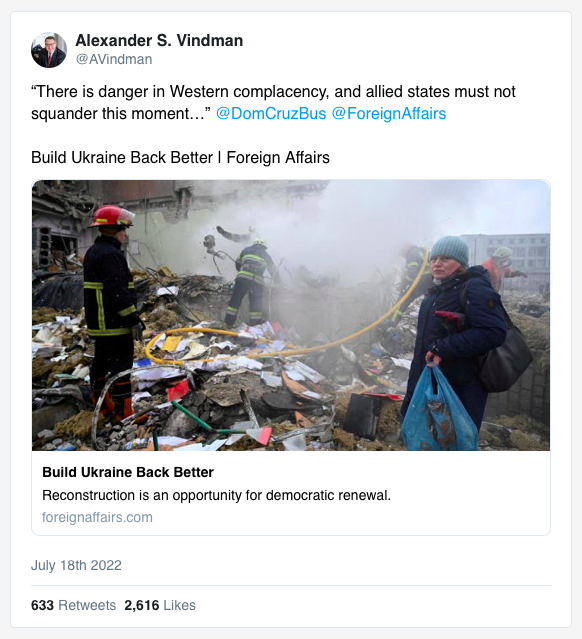



 Shocking: UK Government Admits COVID Vaccinated Children Are 4423% More Likely to Die of Any Cause & 13,633% More Likely to Die of COVID-19 Than Unvaccinated Children
Shocking: UK Government Admits COVID Vaccinated Children Are 4423% More Likely to Die of Any Cause & 13,633% More Likely to Die of COVID-19 Than Unvaccinated Children The Crisis in Ukraine Is Not About Ukraine. It’s About Germany
The Crisis in Ukraine Is Not About Ukraine. It’s About Germany Spain Admits Spraying Deadly Chemtrails as Part of Secret UN Program: One Month after March 2020 Covid-19 Lockdown
Spain Admits Spraying Deadly Chemtrails as Part of Secret UN Program: One Month after March 2020 Covid-19 Lockdown Justice Won’t Come From Our “Legal” System. It Will Come From “The Collective Masses”.
Justice Won’t Come From Our “Legal” System. It Will Come From “The Collective Masses”. Why Was Former President Trump’s Mar-a-Lago Estate Raided?
Why Was Former President Trump’s Mar-a-Lago Estate Raided? Video: The Plan. WHO Plans to Have 10 Years of Pandemics (2020-2030). “Proof that the Pandemic was Planned with a Purpose”
Video: The Plan. WHO Plans to Have 10 Years of Pandemics (2020-2030). “Proof that the Pandemic was Planned with a Purpose” World Economic Forum Adviser Claims the Planet No Longer Needs the ‘Vast Majority’ of the Population
World Economic Forum Adviser Claims the Planet No Longer Needs the ‘Vast Majority’ of the Population PfizerGate: Official Government Reports prove Hundreds of Thousands of People Are Dying Every Single Week Due to COVID-19 Vaccination
PfizerGate: Official Government Reports prove Hundreds of Thousands of People Are Dying Every Single Week Due to COVID-19 Vaccination 11 Year Old Girl Calls Out Klaus Schwab and His Globalist Goons
11 Year Old Girl Calls Out Klaus Schwab and His Globalist Goons The Start of World War III? Things you Don’t Know about Russia and Ukraine
The Start of World War III? Things you Don’t Know about Russia and Ukraine “Forbidden Planet”: An Unelected Shadow Government of Billionaires Has Seized Power … “When Science Fiction becomes Science Fact”
“Forbidden Planet”: An Unelected Shadow Government of Billionaires Has Seized Power … “When Science Fiction becomes Science Fact” One Year Later: How the Biden Admin, Big Tech, and Pfizer Fooled Americans into Taking “FDA Approved” COVID Vaccines that Never Actually Existed
One Year Later: How the Biden Admin, Big Tech, and Pfizer Fooled Americans into Taking “FDA Approved” COVID Vaccines that Never Actually Existed Government Database Reveals 10,000% Increase in Cancer Reports Due to COVID Vaccines
Government Database Reveals 10,000% Increase in Cancer Reports Due to COVID Vaccines Bill Gates’ Sinister Plan to Force You to Eat “Fake Meat”
Bill Gates’ Sinister Plan to Force You to Eat “Fake Meat” On the Nature of Russia’s Military Campaign in Ukraine. Analysis of Russian Military Strategy
On the Nature of Russia’s Military Campaign in Ukraine. Analysis of Russian Military Strategy Donald Trump, The Manchurian Candidate: U.S. Foreign Policy and the Campaign to Destabilize the Trump Presidency. Regime Change in America
Donald Trump, The Manchurian Candidate: U.S. Foreign Policy and the Campaign to Destabilize the Trump Presidency. Regime Change in America Video: Biggest Disaster in Medical History
Video: Biggest Disaster in Medical History Confronting One World Order (OWO) Globalism. The Rise and Fall of the Beast
Confronting One World Order (OWO) Globalism. The Rise and Fall of the Beast Colossal Financial Pyramid: BlackRock and The WEF “Great Reset”
Colossal Financial Pyramid: BlackRock and The WEF “Great Reset” The Psychological Warfare Apparatus Creates False Beliefs
The Psychological Warfare Apparatus Creates False Beliefs


